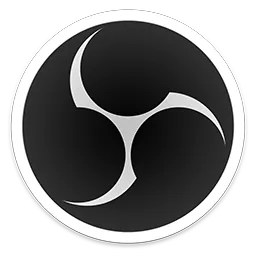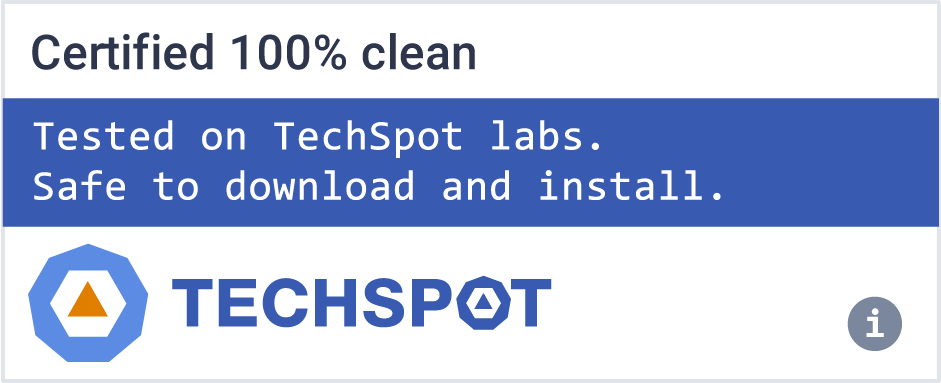OBS Studio provides real-time capture, encoding, and broadcasting for YouTube, Twitch, Instagram, and many other providers. High performance real time video/audio capturing and mixing. Create scenes made up of multiple sources including window captures, images, text, browser windows, webcams, capture cards, and more.
Is OBS Studio free for commercial use?
OBS Studio is open source software and free for anyone to use it. OBS can be used commercially without restrictions, it won't add watermarks and has no limitations.
Is OBS good for recording videos?
OBS Studio stands for Open Broadcaster Software, which means its main purpose is livestreaming your gaming sessions on YouTube, Twitch, Instagram, among others. However, you can record audio and video from multiple sources.
Can you edit videos in OBS Studio?
You can't edit videos on OBS Studio, for that you may need a video editor like DaVinci Resolve, Shotcut or VSDC Video Editor, which are great free options.
Is there a portable version of OBS Studio?
Yes, there is a portable version of OBS Studio. You can download it here. Instruction on how to run it can be found here.
What are OBS Studio basic system requirements?
OBS Studio runs on Windows, macOS and Linux systems with at least 4GB of RAM.
- Windows
- DirectX 10.1 compatible GPU (GeForce GTX 900 Series, Radeon RX 400 Series, Intel HD Graphics 500)
- Windows 8.1, Windows 10, or Windows 11
- Intel i5 2500K, AMD Ryzen 1300X
- Hardware encoders are recommended
- macOS
- Intel or Apple Silicon CPU
- OpenGL 3.3-compatible GPU
- macOS "High Sierra" (10.13) or later
- Linux/Unix
- OpenGL 3.3-compatible GPU
- X window system or Wayland
Features
- High performance real time video/audio capturing and mixing, with unlimited scenes you can switch between seamlessly via custom transitions.
- Live streaming to Twitch, YouTube, Periscope, GoodGame, DailyMotion, Hitbox, VK and any other RTMP server
- Filters for video sources such as image masking, color correction, chroma/color keying, and more.
- x264, H.264 and AAC for your live streams and video recordings
- Intel Quick Sync Video (QSV) and NVIDIA NVENC support
- Intuitive audio mixer with per-source filters such as noise gate, noise suppression, and gain. Take full control with VST plugin support.
- GPU-based game capture for high performance game streaming
- Unlimited number of scenes and sources
- Number of different and customizable transitions for when you switch between scenes
- Hotkeys for almost any action such as start or stop your stream or recording, push-to-talk, fast mute of any audio source, show or hide any video source, switch between scenes,and much more
- Live preview of any changes on your scenes and sources using Studio Mode before pushing them to your stream where your viewers will see those changes
- DirectShow capture device support (webcams, capture cards, etc)
- Powerful and easy to use configuration options. Add new Sources, duplicate existing ones, and adjust their properties effortlessly.
- Streamlined Settings panel for quickly configuring your broadcasts and recordings. Switch between different profiles with ease.
- Light and dark themes available to fit your environment.
- ...and many other features. For free. At all.
What's New
New Features
- Added support for Multitrack Video streaming [palana]
- On Twitch, this is known as Enhanced Broadcasting. For more information, see: https://help.twitch.tv/s/article/multiple-encodes
- The supported audio channel configurations are stereo or mono.
- This feature is currently only available on Windows and requires an NVIDIA GTX 900, GTX 10, or RTX 20 series GPU or newer or an AMD RX 6000 series GPU or newer. Support for other operating systems and GPU vendors is planned.
- When this feature is enabled, the following data about your system will be sent to the streaming service when starting a stream:
- OBS version and audio/video settings (Resolution, framerate, audio channels/tracks)
- CPU info (Name, speed, core counts)
- GPU info (Model, memory, driver version, device ID, vendor ID)
- Memory info (Free, total)
- OS info (name, version, arch, emulation)
- Windows info (Gaming feature status: Game Bar, Game DVR, Game Mode, Hardware-accelerated GPU Scheduling)
- Multitrack Video settings (Maximum streaming bandwidth, maximum video tracks)
- Added support for Enhanced RTMP/FLV multi-track audio and video [palana/kc5nra]
- Replaces the old metadata-based "VOD Track"
- Added "Hybrid MP4" output format (BETA) [derrod]
- Combines fault-tolerance of fragmented MP4 with wide compatibility and faster access times of regular MP4. For more information, see: https://obsproject.com/kb/hybrid-mp4
- Supports inserting chapter markers into the file via a hotkey or API. These markers are supported by most video players and editing software, such as DaVinci Resolve
- Added Linux support to the native NVENC encoder [derrod]
- NVENC AV1 is now supported on Linux
- Added Linux shared texture support to the NVENC encoder [derrod]
- Added Linux shared texture support to the QuickSync encoder [kkartaltepe]
- Added Linux shared texture support to the VA-API encoder [nowrep]
- Added HEVC support to WebRTC output [murillo128]
- Added Composable Themes system to simplify theme creation, maintenance, and enable future customization options [derrod/Warchamp7]
- Themes now consist of a base theme and variants that can be switched between in the new "Appearance" settings tab
- Old themes will no longer work and will need to be updated to the new system. See the wiki page for details: https://github.com/obsproject/obs-studio/wiki/OBS-Studio-Theme-System
- The legacy System theme is no longer available. If it was used for accessibility reasons with high contrast, enable high contrast in your operating system settings to re-enable the OBS System Theme. OBS can only detect high contrast on Windows and macOS at this time.
Changes
- Various UI and Theme tweaks [Warchamp7]
- Audio of multiple instances of a source in a scene/group is now deduplicated [derrod]
- Deduplication is recursive, but does not apply on groups or nested scenes that are currently playing show/hide transitions, this may be fixed in the future
- Scene Collection specific plugin data is now retained for plugins that are not currently loaded [derrod]
- Closed-captions are now supported for HEVC and AV1 [jhnbwrs]
- Qt Fusion style is now always enforced on Linux [tytan652]
- Combined PipeWire window/display capture into unified "Screen Capture" source to align with other platforms [tytan652]
- Renamed "Screen Capture (XSHM)" as "Display Capture (XSHM)" for consistency with other capture sources [tytan652]
- Set default recording format on macOS to fragmented MOV [gxalpha]
- Improved freetype2 text source performance [kkartaltepe]
- File open dialogs now start in the directory of the currently selected file, rather than the default [Warchamp7]
- Moved warnings in advanced output to bottom of settings window for better visibility [GPattenden]
- Various performance improvements for texture encoding [kkartaltepe]
- Prioritize NVDEC decoder on NVIDIA systems [moocowsheep]
- Support NVDEC decoder for encoded DirectShow sources [moocowsheep]
- Replaced non-texture NVENC FFmpeg fallback with native implementation [derrod]
- Log now includes all available encoders [Penwy]
- Reset duration of scene item show/hide transitions when removing the transitions [Warchamp7]
- Adjusted appearance of volume meters [Warchamp7]
- Adjusted appearance of multiview borders and labels [Warchamp7]
- Added support for audio-only and video-only WHIP outputs [tt2468]
- Changed default container in non-macOS OBS Beta builds from Fragmented MP4 to Hybrid MP4 [derrod]
Bug Fixes
- Fixed packet priority not being set for some AV1 encoders, resulting in outputs never recovering from dropping frames [derrod]
- Fixed various issues with audio channel layouts in (remuxed) recordings [pkv/derrod]
- Fixed various issues with the native FLV muxer [palana]
- Fixed various issues with the RTMP protocol implementation [palana]
- Fixed minor errors in HEVC and AVC decoder configuration records [derrod]
- Fixed change discard confirmation dialog popping up twice when closing source properties [tytan652]
- Fixed QSV AV1 on multi-GPU systems [thyintel/derrod]
- Fixed FFmpeg output erroneously checking disk space when not writing to a file [RytoEX]
- Fixed auto-config wizard not working without a stream key [mar10iana]
- Fixed text alignment with extents [exeldro]
- Fixed encoder properties having nested scroll areas in output settings [derrod]
- Fixed crash if input video resolution changes when using hardware-accelerated decoding [tt2468]
- Fixed button text being cut off in controls dock [powersagitar]
- Fixed undo action for filters showing UUID instead of name [derrod]
- Fixed not all eligible Patreon supporters being shown in the "About" dialogue [Warchamp7]
- Fixed copy-pasting show/hide transitions not including duration [Warchamp7]
- Fixed settings dialog being cut off on low-resolution screens [tytan652/Warchamp7/derrod/RytoEX] (Yes, this one took four people to figure out)
- Fixed paused indicator text stacking [Aleksbgbg]
- Fixed disabled audio sources showing up in advanced audio properties [Penwy]
- Fixed Grid Mode setting not being persisted when enabled through the View menu [RytoEX]
- Fixed CoreAudio not handling encoder delay, resulting in audio being 44-48 ms late [derrod]
- Fixed OBS not handling negative audio timestamps at the start of an output correctly, resulting in Opus and CoreAudio AAC audio being delayed by a few ms [derrod]
- Fixed VA-API AV1 encoder being unavailable if H.264 is unsupported [kkartaltepe]
- Fixed WebRTC buffer size being too small for recovery with high-bitrate video [Sean-Der]
- Fixed renaming multiple scenes when hitting Tab key while renaming [howellrl]


